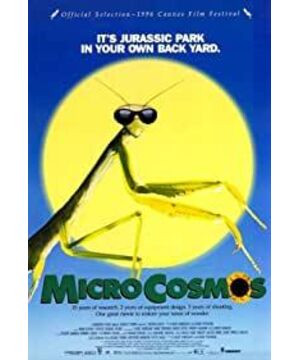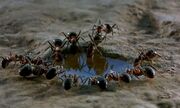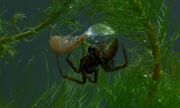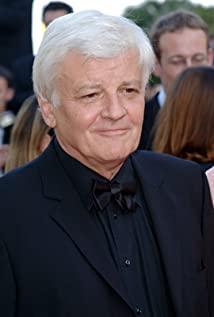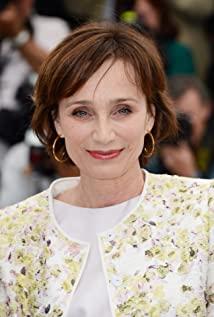——About
what you know and don’t know, what you can know and what you can’t know in “Microverse I and II”, what must you know? The visible and the invisible, the visible and the invisible, what should be seen? What you can see clearly and what you can't see clearly, what you want to see clearly and what you don't want to see clearly, some things you could have seen more clearly... What are they?
Other concepts of zoomed
-in view are aimed at the human body, so-called panorama, medium shot, close-up, partial close-up, etc. So if it is a close-up of an ant, can you afford it?
An ant is walking and makes a sound. Has anyone ever heard the sound of an ant walking? But if you can't hear it, it doesn't mean it doesn't exist. Ants must have a sound when they walk.
Scene distinction is visual, and auditory, the concept corresponding to scene distinction is volume. The amount of volume is not a concept of how much, it is a confrontation between strong and weak.
How big is an ant? It is very small, this is a common perceptual understanding of everyone. The screen is so big, and the visually tiny things are magnified to such a degree, can the sound still remain silent? Most of the images are like this. The scene changes constantly from beginning to end, but the volume is always the same. Even if the volume changes occasionally, it depends on the distance between the subject and the camera. There are many reasons for determining this distance. For example, the plot has nothing to do with the scene anyway.
In "Small Universe", the visual and auditory magnifications are performed at the same proportion. For a close-up view of an ant, the image is magnified so that you can see the ant's tentacles moving; then the sound is also magnified so that you can hear those You can't hear things that you can't hear at all, and you can't hear the sound of ants walking. Once zoomed in, you can hear and see things that would otherwise require a lot of effort.
However, the amplification of the picture and sound does not allow you to see and hear clearly. Related Links Movie "Zoom". The magnification in "Zoom" means that the more you zoom in, the more blurred it becomes. Similarly, in terms of hearing, turn up the volume of the speaker, and the noise will also be louder when the volume is louder, which will not make the sound clearer at all, and the same blur. Therefore, you hear the sound that you couldn't hear or couldn't hear clearly, not because the volume was amplified, but because the sound was clearer. To achieve sufficient clarity, both visual and auditory magnification must be done.
The images you see are filtered, and the sounds you hear are fake, not original anyway. This thing has to do with his perspective. After all, everything is fake. Whose eyes are you seeing? It's not your perspective, not the author's perspective, not any specific person, and certainly not a bug's perspective. It doesn't exist at all, it's absolutely virtual. "Zoom" has already told us this simple physics truth. Of course, the more you zoom in, the more blurred it becomes. How can it be possible to zoom in and make it clearer? But this "Small Universe" is indeed more and more clear, and its premise is to put everything into a vacuum. It's to separate it from the environment, just say, noise reduction, remove those turbid molecules in the air - the impurities in the vision, let's say it's in a vacuum - a particularly non-realistic space, and then put your eyes and ears (The camera) is also placed in this vacuum, and it is possible to pursue the clear effect as it is now.
To sum up simply, it is the enlargement in quantity and the enlargement in quality. The change in quantity is obvious, but the difference in quality is not only because it is a complicated topic, but also because of its ambiguity. The so-called “removing the false and preserving the truth” is exactly what is removed and what is retained? God knows.
The amplification of picture and sound is a technical procedure, while the amplification of sight and hearing—the pursuit of clarity and clarity, is expensive and extravagant. Do you see how he made things so clear? It involved how he got such a clear image, how to make such a lifelike and clear sound. There is no need to investigate the specific means, but it is obvious that the cost is very, very high. It is necessary to pay such a high price to clarify one thing. This is the price paid for clarity. Similarly, I am here with you now Speaking of the magnification he has done and his pursuit of clarity, the price is not cheap. Pay a very high cost, but just want to make it clearer. But you might think what I'm saying is not at all clear and confusing, and that's not what I expected at all. Because, like everyone else, I have always been a little ignorant of the so-called pursuit of clarity. I know that it is difficult to explain a thing clearly. If I can explain a sentence or two clearly every now and then, I think it is already very remarkable, from beginning to end. It's all clear, isn't that just taking things into a vacuum to talk about it? It's so luxurious, and the cost is too expensive, and I'm so stingy...
Can't you see clearly? I let you see clearly!
exist or not? Is it clear or not? The former does not depend on human will, the latter depends on how you treat it. This thing exists, but you have never been able to see it clearly, and you have never been able to hear it clearly, then, I let you see it clearly, I let you hear it clearly, what I do is a process of amplification, amplification It's for clarity, clarity.
If it’s too big, you can’t see it clearly, if it’s too small, you can’t see it clearly. There are so many things you can’t see clearly, and you may never see clearly what you see every day. That’s how we live. in an ambiguous world. So if one day I let you see something so clearly, can you bear it? Clearly, it is the style of "Small Universe". How many things are clear in our life? And the things that are not clear are vast.
I don't know, it's because you don't ask for clarity, you don't ask for a deep understanding, you pass it in a confused way, even if you're just flipping through the book, it's the same with video. Because the amount of information is too large, most of the things are not allowed to be seen clearly at all, just let it pass, is this your attitude? A lot of them are anyway.
Too big, too small, too close, too far to see clearly, and the thing on the screen is a thing that not only needs but also provides you and it to maintain a most suitable position, so the things on the screen tend to be able to make You see clearly. That's because, the screen is there, and it obscures what's beyond the screen, so you have to focus on the screen. This is also because, at the same time, it also reveals that those things that you can't see clearly are often because you don't want to see them at all. You can't see them because you don't want to see them!
Wanted you to see clearly, so we moved it to the screen, and the remaining question was, how clearly did you see it? When I saw his body, I still saw a pore on his body. There is a huge difference. "Small Universe" does the latter, allowing you to see clearly what you don't ask to see clearly. But it is still in the macroscopic world, and it has not entered the microscopic world at all. It is to let you see clearly what you could not see before, not to let you see what you cannot see at all. He is far from dismantling an atom. the point of speaking. "Small Universe" is very, very extreme in the macroscopic world, but it is still far from the microscopic. What is the part between the microscopic and the macroscopic? How big is that part? Has anyone calculated it?
Everything you don't know, what you can't see, what you can't see clearly, and what you don't want to see clearly, "Small Cosmos" has all been done, and it's there, if you want to see it, everything can be seen Yes, and then yes, whether you look at it or not is still your question.
plot
"Small Universe I" has some very poetic plots, scattered in different parts of the page, but incomplete. There is a simple chronological clue. On this basis, the plot is structured, from the sun rising to sunset to night, a The process of the cycle, at the end, is still the mood of the sun rising and the cycle repeating itself. Everything has a beginning and an end, otherwise what's the point of time? There is a very close relationship between the plot and the scene, and all the plot is scattered among the scenes that are overly exaggerated, including how a drop of dew on the leaves dries up. It is to occasionally come out of the insect world and shoot one or two "normal" scenes, the woods, the environment, etc., it is a cutscene, which is equivalent to the big perspective in the fourth-generation drama, where the characters are in the scenery. In the middle, far away, all such lenses are used for lyricism. There is a huge disparity in the proportions of the largest and smallest views. Not a unified point of view, the "normal" scene is absurd in this film, and of course the lyric itself is absurd. The previous shot is still shooting how a seven-star ladybug opens its eyes, and the back shot takes a big vision of a forest with a wide field of view. What does that mean? But absurdity is allowed. In my understanding, this is because he takes into account the existence of the audience, so that you can relieve eye fatigue. Because staring at something for a long time and looking carefully, the eyes are indeed very tired, so the ancients read books and always looked into the distance from time to time, looking at green things in the distance. I found that in many illustrated books now, the pictures in the book have nothing to do with the content of the book, even the scenery, so it turned out to be so well-intentioned.
There are also large sections of lyricism in the plot, and another point is the same as the fourth generation, not stingy with music, the type of music chosen is the kind that is particularly effective for lyricism, and tends to get out of hand. To the point, that emotion is about to pop out of the screen.
In "Microverse I", animals, plants, water, the environment, the sun, the moon, the sky, clouds... all of these things are in it, and the relationship between them, but no people, no words, only images and sound (motion). It satisfies curiosity, but is never satisfied with laziness. Laziness is always expecting a voice to say something by the side, too lazy to think for yourself.
To ask questions, you need to use words, but there is no such thing in "Little Universe I". He tries to use the image itself to ask questions, which is not easy to see. The group most sensitive to this issue are children. "Small Universe I" talks about animals and plants together, and treats them as one kind of life, with equal attitudes. They are the same kind of creature, there is no difference between good and bad, and they do not go to the low-level and high-level forms of life at all. In the quagmire, the body of the animal is moving, and the body of the plant is also moving. The magnification it does even spreads to the speed of the image, allowing you to see the process of a flower bud opening within five seconds, and then the bee and the The skin-to-skin intimacy between flowers is often seen in such shots in "Man and Nature". These are the questions themselves, the difference between animals and plants, their relationship to water, and the relationship between them! All of these contents are in the video. These questions are easy to answer in words. If the questions are also in words, it is not even necessary at all. What is there to ask! Therefore, the important thing in "Small Universe I" is the way of asking questions, which is to ask the same question again. If you want to answer this question, you must answer it again. The answer can be found in "Small Universe II". II tries to answer certain questions, and those questions are exactly laid out in "Small Universe I".
"Small Universe II" has a very strict structure and regular plot. Different from "Small Cosmos I", "Small Cosmos II" not only has people's intervention and people talking, but also talks about people from beginning to end, and there is no answer at the end. Ⅱ does not have the kind of free and loose in Ⅰ, and the topic suddenly becomes very serious, discussing the origin of life. There is a strong emphasis on form. The appearance of a monk must be a prophecy, and then he is saying, what he said are some very basic philosophical questions, why would there be people? Where does life come from? How did I get here? etc. Choosing a monk and letting him tell this story is a very, very important sense of formality chosen by the author. Philosophy was discussing the question he raised, and he could not give an answer, so he left the question to religion. The ending is a relationship between a person and a road, leading to destiny, but after thinking about it, I walked over it very calmly.
The related link work is a set of piano pieces, the title is also called "Small Universe", the author Bartok is a Hungarian. Modern music at the beginning of the last century, some kind of exploration in the field of new music. Written for children, it is arranged in a progressive order, starting with simple five-finger exercises and ending with complex Hungarian-style dance music. This film is very similar to this. There is a path from shallow to deep. I is a children's book. Children will definitely read it with relish and satisfy their curiosity. It is the curiosity of children to pay attention to what the thing itself is. There is no explanation. There is no need to explain, just see, without rational thinking, don’t talk about knowledge, 80% of the knowledge will be forgotten. II is not like this at all. II is very complicated, and it is entirely rational inference and verification. As a whole, it's a very modern thing. What does modern mean? It's just that you have to re-answer what it is. Isn't it a documentary, science and feature film in the traditional sense, but an alternative drama? Is it a fable? Philosophy books? Or scriptures? What do you think, you have the right to give your interpretation.
How do you watch "Microverse"
At first glance, the content of "Microverse" is very close to "Animal World". But if you really look at it as "Animal World", it's really a waste of time. But a lot of people are definitely like that, and I know I'm not like that because I don't watch Animal World at all.
CCTV's "Animal World" has a very, very large audience base, and now "Animal World" and "Man and Nature" are very inclined to be aestheticized. . But this is another misunderstanding. The mainstay of "Animal World" is not the beautiful pictures, but the commentary. "Animal World" is about storytelling and is supported by commentary. "Animal World" is for listening. You can transform "Animal World" into a radio drama. It is still "Animal World", and there are still a large number of people who will listen to it on the radio, but if you turn it into a silent film, you will definitely No one watched.
"Small Universe" is not for popular science, but for you to see. What he shows you is very detailed. He doesn't explain it, and he doesn't just do a biography of a certain insect. Instead, he puts together all kinds of things that you didn't notice before for you to see. When it comes to editing, if we talk about the scenes in it, why does one specific scene take over the next one? There is complete freedom in the middle. This freedom is at the artistic level, and another artistic level is the choice of music. free. "Small Universe" is a work of free art, but also a serious understanding of life.
The sound comes from two sides, inside and outside the picture. The choice of off-screen sound is, of course, completely subjective. It uses a variety of music artistically, with a very rhythmic sense, which is the kind of rhythm that matches the sound and vision. Of course, the choice of music, for this specific work, is the greatest freedom the author has.
The movie is so scary
. On the ground or on the water, the shiny body of a bug suddenly appeared, a flaming red mass, and it was still spreading and expanding. At first glance, it looked like the scene of a distant atomic bomb explosion. , I looked closely and found that it was not. It was a bug that emerged from the water... This scene is so scary, it is so similar to the scene of the atomic bomb explosion. The screen is so big, the nuclear explosion is to shrink the extremely large scene, and it looks like this when it is placed on the screen, but the process of this bug jumping out of the water is to enlarge the extremely small thing, and what you see on the screen is also like this. ...this thing has to do with "what a movie is", it's not so much that the content on the screen frightens people, it's more that the movie itself is scary.
How to photograph the magma erupting from the volcano is very similar to the close-up shot of the ants. There is a problem with the distance between the camera and the subject, and the ratio between them is very commensurate, whether it is in the same direction or in the opposite direction. The sky, the ocean, everything is amazingly similar, like the sky and the ocean itself, me and you, the birds in the sky, the fish in the ocean, movies can make these things amazingly similar.
While he is discussing life itself, he is also discussing the film itself. The size of the movie (screen) is fixed, but the thing that is photographed is sometimes big and sometimes small, the infinitely large thing shrinks to the screen, the infinitely small thing is enlarged to the screen, and the screen is always so big, so The power of the movie is to be constant and change. Then, what is new? That is, every time a film is made, it is to explore what kind of things can be made into the film.
Movies are not only scary and terrifying, but extravagant, allowing you to go from the proletariat to the bourgeoisie without first becoming a bourgeois. When a movie exists, it makes things other than the movie not exist. This is a movie, so you can see the movie clearly; this is not the case with TV. The TV and the surrounding environment exist at the same time, so you can’t see what is on the TV. Clearly, you can't see what's around the TV.
Not being able to see clearly will lead me to see the process of a bug sticking out of the water as a scene of an atomic bomb explosion, and then it is inevitable to talk nonsense like me.
Wuleilei
Jun.22nd 2005
Xiaoyue Riverside
View more about Microcosmos reviews


